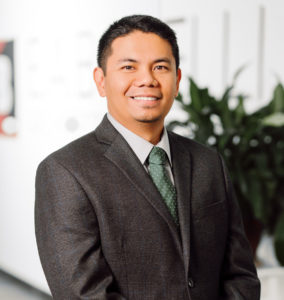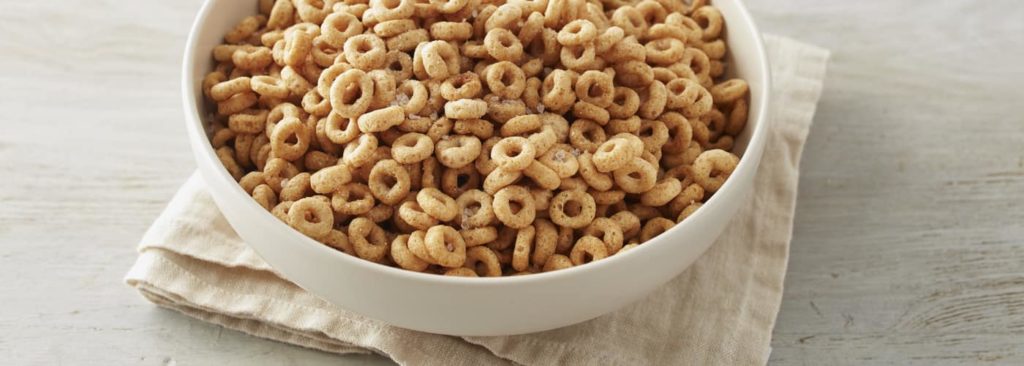 This month we are very proud to feature Joseph Laquian, P.E., S.E.
This month we are very proud to feature Joseph Laquian, P.E., S.E.
Joseph graduated from the University of Santo Tomas with a B.S. in Civil Engineering in 2003 and joined E.A. Bonelli in 2007.
In 2014, Mr. Laquian joined the ownership group of EAB and today, as Director of Structural Engineering, Joseph takes a lead role in guiding and mentoring our junior engineers while maintaining outstanding quality control over our entire structural engineering department.
We sat down with Joseph to learn more about his educational inspirations, career path, and enthusiasm for food & beverage facility design. We began by asking what inspired him to enter the field of structural engineering.
Prior to start of my freshman year in high school, the students were to attend the school orientation and discuss with the school counselor what they were most inclined to choose with regards to a profession in the future. They helped us pick a class, within field of study that we’re interested in taking for college. Each class is structured with courses that aligned with the general college course field that we are particularly interested in. I took the pre-engineering class, which focused in physics, chemistry, thermodynamics, drafting.
I have always had an affinity with math and science, so my tendency is focused on STEM-related course. My dad is an architect, and we have relatives working in construction as well. In some way, my father did have some influence in my chosen field. I could have easily been an architect, but I like crunching numbers more, so I went with the structural route.
You attended the University of Santo Tomas in Manila. Now that you have some perspective on the curricula and degree paths offered by colleges in the U.S., what do you think are the most interesting differences between studying engineering in the Philippines as opposed to the States?
I’ll start with the similarities first. The curricula in the University of Santo Tomas were primarily based on US standards such as UBC (previously), ACI, AISC, TMS, with the only difference in units used. The Philippines follows the international system of units (SI). The processes and methodology of design were the same.
Back home, there was emphasis in memorization of formulas, and knowing the references by heart. The US focuses more in understanding the theory and encouraging the students to grasp the concepts first. When examinations were administered [at my university], design references were not allowed. When I came here and took the EIT, PE, and SE exams, I was surprised to learn that we would have references for our use.
Since 1992, the month of May has been dedicated to acknowledging the history, cultural contributions, and achievements of Asian-Americans. Is this something that resonates with you?
Yes, it is great thing to know that there is a month dedicated for the acknowledgement of different people of many origins, especially from the Asia-Pacific region. They came to the U.S. seeking the American ideals of life, liberty and pursuit of happiness. And not only that, they also aimed to contribute and give back to the country, in the fields of science, arts, healthcare, commerce, and so on. Being a first-generation transplant, I’m grateful for the opportunities available.
What can you share about one of the most interesting (or earliest) projects that you worked on?
I remember working a lot on tenant improvements or equipment additions in the General Mills plant in Lodi, CA. There have been continuous improvements and additions and modifications over the years in the plant, so the as-built drawings can only provide information up to a certain point. You really needed to go to site to gather data.
During my early years in EAB, the constant field work and surveying that I performed together with Howard Tom was formative and educational for me. I got to experience firsthand the issues that needed to be taken into account with the design: factoring scheduling issues, plant shutdowns, learning about process flows, and numerous other items that I would not normally learn in school and likely, at any other firm. At the end of the day, I learned new things, appreciated how things are built, and would come home smelling like Cheerios.

You have taken on the role of mentoring and guiding junior engineers at the firm. What is something that you think all emerging professionals and recent graduates in the engineering fields should know as they are starting out on their careers?
Have a critical thinking mindset. Keep learning. Stay curious.
One of my favorite quotes, by Jack Welch, the former CEO of General Electric, is: "Before you are a leader, success is all about growing yourself. When you become a leader, success is all about growing others."
Lastly, we're all spending a lot of time working from home these days as we navigate the current pandemic situation. What's your favorite go-to recipe for the family?
It would have to be Filipino Chicken Adobo. Classic comfort food.
INGREDIENTS
· 1/4 cup soy sauce (65 ml)
· 1/2 cup white Filipino cane vinegar, or distilled white vinegar (125 ml)
· 6-8 cloves garlic, smashed with the side of a knife and peeled
· 1 teaspoon whole black peppercorns
· 2 bay leaves
· 6 skin-on bone-in chicken thighsINSTRUCTIONS
1. Place the soy sauce, vinegar, garlic, black peppercorns, and bay leaves in a large, nonreactive sauté pan, and then nestle the chicken thighs, skin side down, into the pan. Bring the liquid to a boil over high heat, and then cover and simmer over low heat for 20 minutes. Turn the chicken over, and then cover and simmer for another 10 minutes.2. Uncover the pan, and then increase the heat to high and return the sauce to a boil. While occasionally turning and basting the chicken, continue boiling the sauce, uncovered, until it is reduced by half and thickens slightly, 5–7 minutes. Serve with steamed white rice.